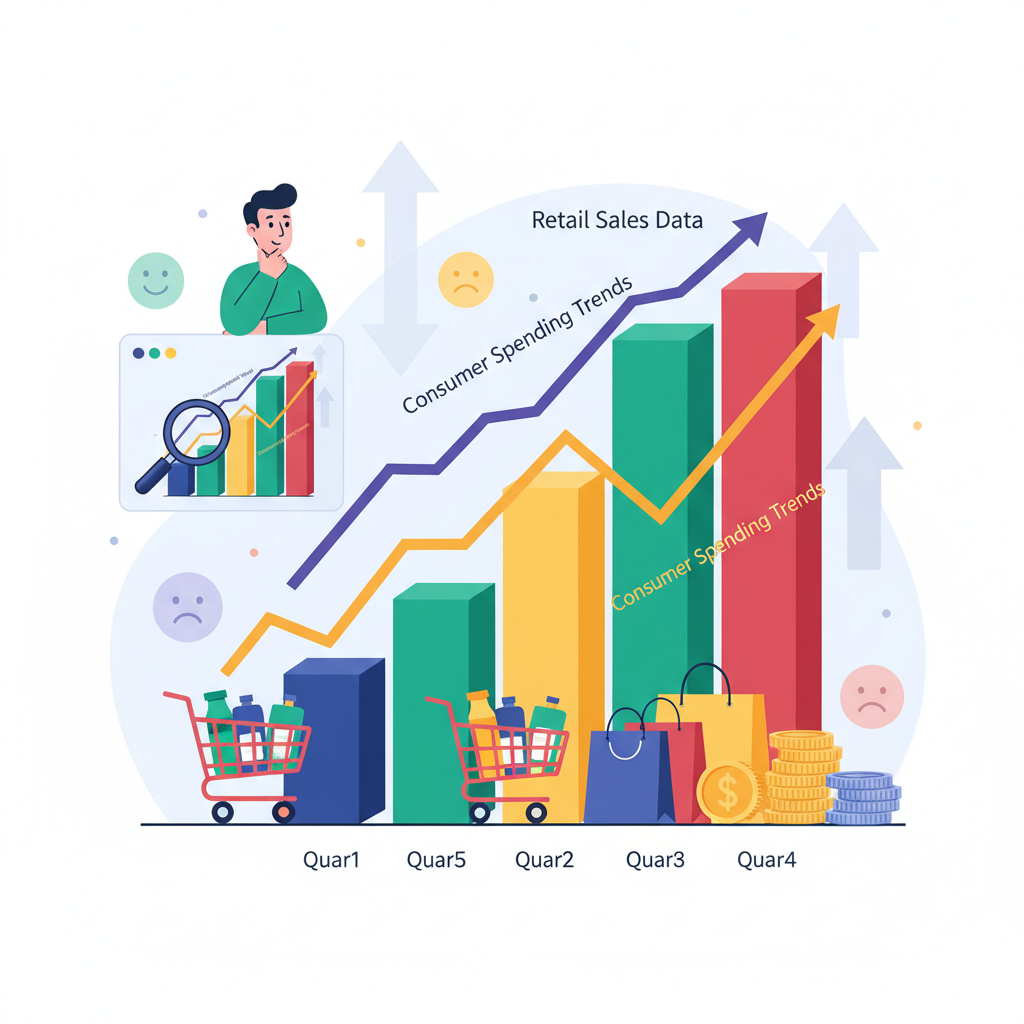Overview of Retail Sales Growth and Risks
In 2025, retail sales are expected to grow by approximately 3.1%, driven mainly by a surge in durable goods purchases. This growth reflects consumers’ ongoing demand for essential and long-lasting items.
However, this optimistic forecast faces significant risks, including potential tariff adjustments and interest rate increases. These could slow economic expansion and negatively impact consumer spending habits.
Projected Growth in Retail and Durable Goods
Retail sales growth in 2025 is anticipated to be strong, with durable goods spending rising by nearly 4.7%. This increase shows confidence in higher-value purchases despite economic uncertainties.
The durable goods sector’s expansion is poised to level off in the coming years, indicating a possible return to normalized consumption patterns post-2025.
This projection underscores the resilience of consumers who prioritize long-term investments during times of cautious optimism.
Economic Pressures Affecting Consumer Spending
Economic pressures such as inflation and rising living costs are causing consumers to become more cautious with their spending, focusing on essentials.
The threat of tariffs and higher interest rates adds uncertainty, potentially reducing disposable income and slowing retail sector momentum.
As a result, discretionary spending is expected to contract somewhat, influencing retail sales growth and shifting buying decisions towards value-oriented products.
Consumer Sentiment Trends and Spending Behavior
Consumer sentiment has notably declined since late 2024, with optimism dropping by 35% from its peak. Rising inflation and living costs are the main drivers of this shift.
This softer sentiment translates into more cautious spending, as consumers prioritize essential purchases and adjust their budgets, especially during key shopping seasons.
Despite the cautious mood, consumers continue to influence retail trends by changing their spending priorities and shopping behaviors throughout 2025.
Decline in Consumer Optimism and Inflation Concerns
Since late 2024, consumer optimism has fallen sharply due to persistent inflation concerns and the increasing cost of living. This has dampened confidence in discretionary spending.
Inflation remains the dominant worry influencing purchase decisions, even as tariff fears have somewhat diminished in impact.
Consumers are becoming more selective, reducing expenditures on non-essential items and focusing their resources on necessities to manage tighter budgets.
Shifts in Spending Priorities and Early Shopping
Amid cautious economic sentiment, many shoppers have shifted to prioritizing essentials over luxury or impulse purchases, reflecting a practical financial approach.
Additionally, consumers are beginning their holiday and seasonal shopping earlier than usual, spreading out their spending to better align with budget constraints.
This early shopping trend indicates a strategic shift as shoppers respond to higher prices and inflation by planning purchases carefully.
Spending Categories: Economizing, Maintaining, and Splurging
Consumer expenditures can be divided into three categories: economizing, where spending is reduced on big-ticket or non-essential items in favor of repairs or cheaper alternatives.
The maintaining category includes continued spending on necessities and sustainable products, reflecting stable consumer needs and growing eco-conscious priorities.
Meanwhile, splurging occurs selectively, often on quality or sustainable goods, as many consumers, especially younger ones, willingly pay premiums for environmentally responsible options.
Eco-Friendly Spending Preferences
Over half of consumers express willingness to pay more for sustainable products, demonstrating a strong market trend toward environmental responsibility in spending habits.
Consumer Financial Health and Demographic Impact
US households have seen substantial growth in wealth and wages since 2019, which continues to support consumer spending despite economic uncertainties.
This financial strength allows many consumers to maintain spending levels, even as inflation and price increases challenge budgets across demographic groups.
Household Wealth and Wage Growth Supporting Spending
Strong wage growth combined with significant household wealth accumulation provides a solid foundation for consumers to sustain spending in 2025.
Many families hold high checking account balances, offering a buffer that supports ongoing purchases and cushions against sudden economic shocks.
This financial resilience is critical as consumers navigate inflationary pressures and adjust their spending priorities within varied income levels.
Impact of Tax Policy Changes on Disposable Income
Upcoming tax changes projected for 2026 are expected to increase disposable income, particularly benefiting middle-income households.
The redistribution of tax benefits is likely to enhance spending power for these groups, enabling more confident retail shopping and economic participation.
However, the level of impact will vary across demographics, with lower and higher-income families experiencing smaller gains in disposable income.
Retail Sales Data and Market Adaptation
Recent retail sales data from 2025 show fluctuations with a slight decline in September after solid summer results. Despite this, year-over-year growth remains robust, signaling overall market resilience.
Seasonal variations play a crucial role, as spending spikes during key periods like holidays, with consumers starting shopping earlier to manage budgets amid inflationary pressures.
Recent Sales Trends and Seasonal Variations
The retail sector experienced softening sales in some months, demonstrating typical seasonal fluctuations. Consumer caution affects timing and volume of purchases during these periods.
Yet, overall demand remains healthy, supported by accumulated household wealth and wage growth, which help sustain spending despite economic uncertainties.
Retailers benefit from understanding these cyclical trends to adjust inventory and marketing strategies, optimizing performance during peak and off-peak seasons.
Adapting to Consumer Expectations on Value and Sustainability
Consumers increasingly seek products that balance value with sustainability, driven by rising awareness and willingness to pay premiums for eco-conscious goods, especially among younger shoppers.
Retailers must align offerings with ethical considerations, improving transparency and sustainable practices to meet evolving demands and retain customer loyalty.
This shift requires businesses to innovate in product design, sourcing, and communication to remain competitive in a market prioritizing both cost-effectiveness and environmental impact.

